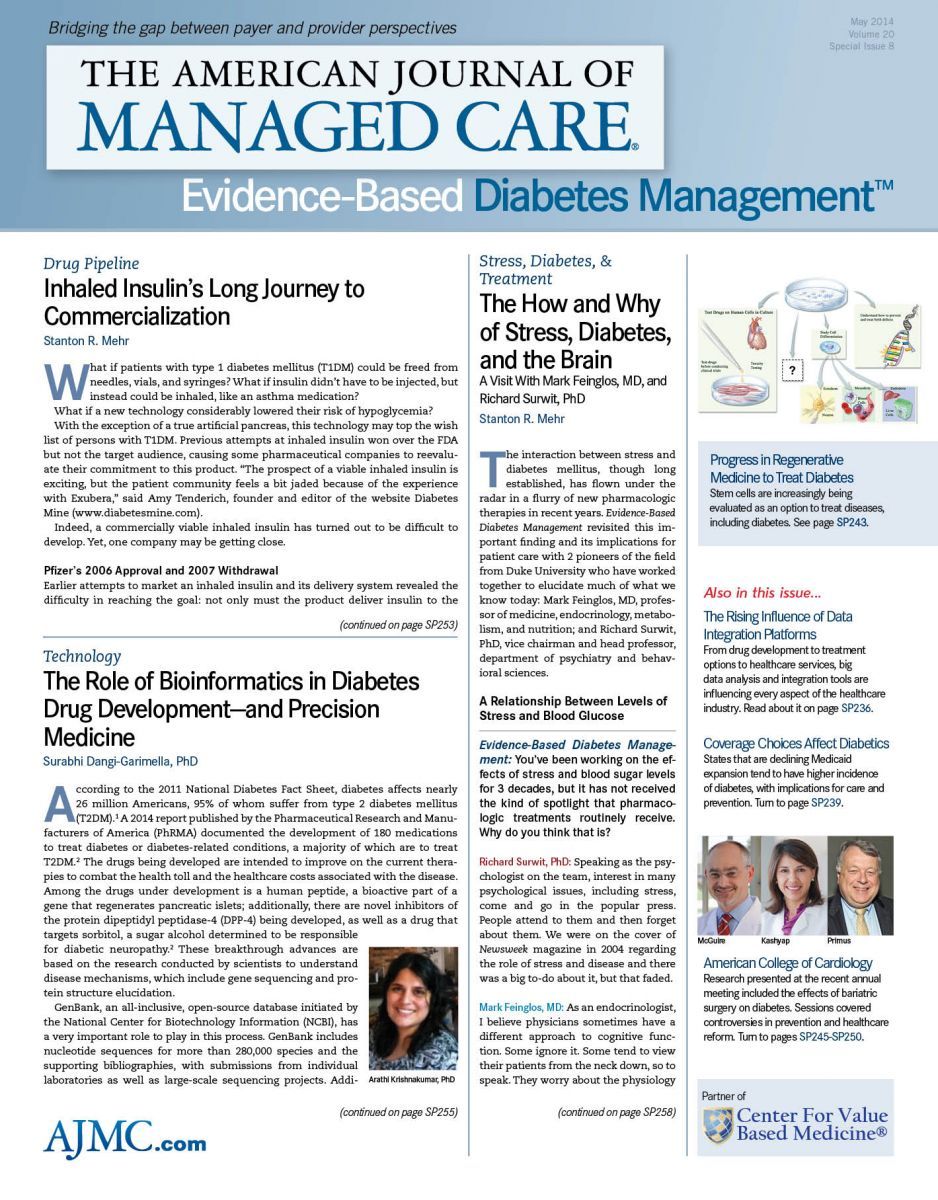- Center on Health Equity & Access
- Clinical
- Health Care Cost
- Health Care Delivery
- Insurance
- Policy
- Technology
- Value-Based Care
Evidence Builds on Yoga, but No Reimbursement Yet
More than 80 yoga practitioners, in leggings and tank tops, squeezed into the meeting room at the Hilton in Midtown Manhattan at Yoga Journal LIVE! on April 27 to hear about a study funded by Aetna1 on how yoga therapy improved a host of health measurements related to stress.
Six days later, just a few blocks away, leading physicians with the American Psychiatric Association (APA) urged reporters covering their 167th Annual Meeting at the Jacob K. Javits Center to check out the latest research on the practice. Yoga was prominently featured in APA’s special program track, “Complementary, Alternative, and Integrative
Medicine in Psychiatry.”2
No one will confuse a Yoga Journal conference with a professional medical meeting, but the juxtaposition of settings for presenting evidence-based results speaks to a larger phenomenon: yoga, and yoga therapy in particular, has gained notice as medicine looks for new, low-cost tools to help patients fight diabetes mellitus, obesity, cardiovascular disease, and mental health disorders.
Interest and studies are increasing each year. In 2003, there were 56 peer-reviewed studies that included the word “yoga” in the title on PubMed; in 2013, there were 384. There is now an International Association of Yoga Therapists, which is a credentialing body with higher requirements than are needed to teach yoga. There’s also an International
Journal of Yoga Therapy, which was accepted on PubMed in 2011.
Aetna’s interest in the yoga study comes as the insurer seeks ways to address the health consequences of stress: the costs of treatment for metabolic disease, increased used of employee assistance programs (EAPs) for alcohol and substance abuse, and more general impacts such as lost productivity, according to Paul Cappola, who heads Aetna’s employee wellness program.
What sets the 2012 Aetna study apart is that it was funded by a national health insurer, which raises the question: as yoga practice and yoga therapy become more common, will payers start allowing reimbursement?
A few nurses who also teach yoga attended the Yoga Journal presentation by Gary Kraftsow, and they peppered members of Kraftsow’s American Viniyoga Institute with questions about payment during a break. One cardiovascular nurse was especially eager to bring her patients the techniques, which involved breathing exercises and alignment poses of increasing duration.
Aetna funded the study after its chief executive took up yoga following a skiing accident, and transferred the findings to an employee wellness program that the company touts to other employers as a way to improve employee health and increase productivity. So far, results supplied by Aetna show positive results, with participants seeing statistically significant improvements in 5 areas:
• Triglycerides. Among participants, 85.5% were in appropriate range (less than 150 mg/dL); 74.0% were in appropriate range before the program started.
• High blood sugar (glucose). Among participants, 84.7% were in appropriate range (less than 100 mg/dL); 76.3% were in appropriate range before program started.
• Low high-density lipoprotein, or “bad,” cholesterol. Among the participants, 76.3% were in appropriate range (more than or equal to 50 mg/dL for women and 40 mg/dL for men); 61.8% were in appropriate range before the program started.
• Blood pressure. Among participants, 93.9% were in appropriate range (lower than or equal to 130/85 mm Hg); 77.1% were in appropriate range before the program started.
• Waist circumference. Among participants, 21.4% were in appropriate range (less than or equal to 35 inches for women and 40 for men); 9.2% were in appropriate
range before the program started.
• Body mass index (BMI). Among the participants, there was a statistically significant improvement in BMI, with 28.3% achieving the appropriate range (lower than 30 kg/m2), compared with 21.7% who were in the appropriate range before the program started.
Despite all this, Aetna is proceeding slowly. “We’re continuing to evaluate the data,” Cappola said. “We are making sure the results we have are evidence-based.” While there is no timetable for reimbursement, “We are moving in that direction,” he said. “There’s greater acceptance. The real evidence is coming in, and employers are starting to be more open-minded. We have the true believers, and we have the skeptics.”References
1. Kusnick C, Kraftsow G, Hilliker M. Building bridges for yoga therapy research: the Aetna, Inc., mind-body pilot study on chronic and high stress. Int J Yoga Therap. 2012;(22):91-92.
2. American Psychiatric Association website. Scientific program for 167th Annual Meeting, May 3-7, 2014. http://www.intpsychiatry.com/uploads/7/0/8/6/7086290/annual_mtg_caim_track_web.pdf. Accessed May 7, 2014.

What It Takes to Improve Guideline-Based Heart Failure Care With Ty J. Gluckman, MD
August 5th 2025Explore innovative strategies to enhance heart failure treatment through guideline-directed medical therapy, remote monitoring, and artificial intelligence–driven solutions for better patient outcomes.
Listen
From Polypharmacy to Personalized Care: Dr Nihar Desai Discusses Holistic Cardiovascular Care
May 30th 2024In this episode of Managed Care Cast, Nihar Desai, MD, MPH, cardiologist and vice chief of Cardiology at the Yale School of Medicine, discusses therapies for cardiovascular conditions as they relate to patient adherence, polypharmacy, and health access.
Listen
Integrated Care for Chronic Conditions: A Randomized Care Management Trial
December 3rd 2025The authors sought to understand the differential impact of payer-led community-based care management approaches on stakeholder-oriented outcomes for publicly insured adults with multiple chronic conditions.
Read More

